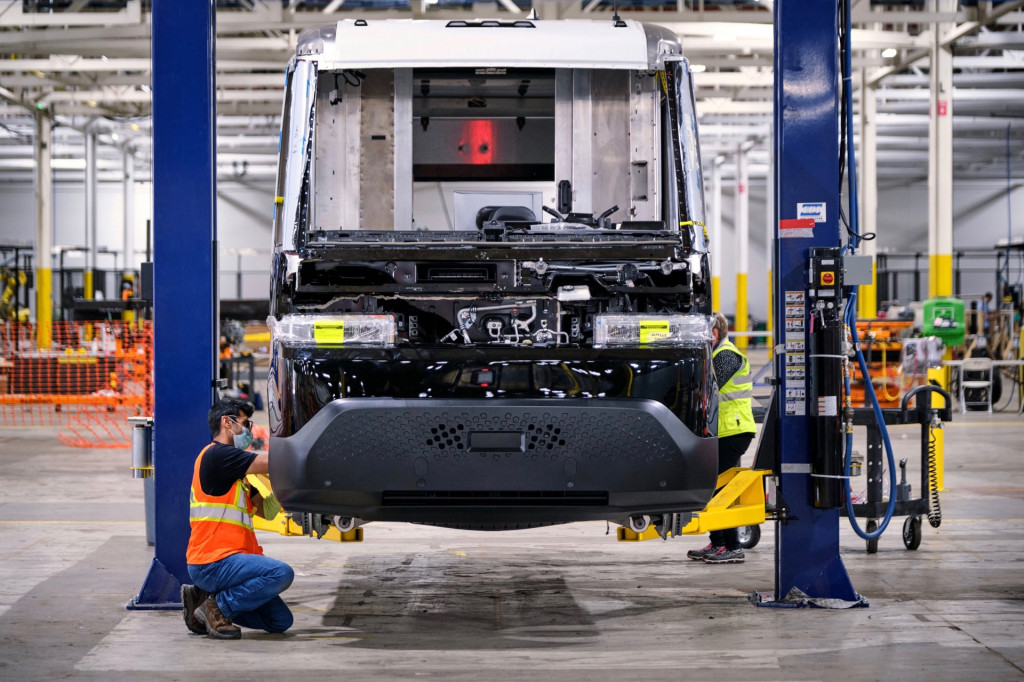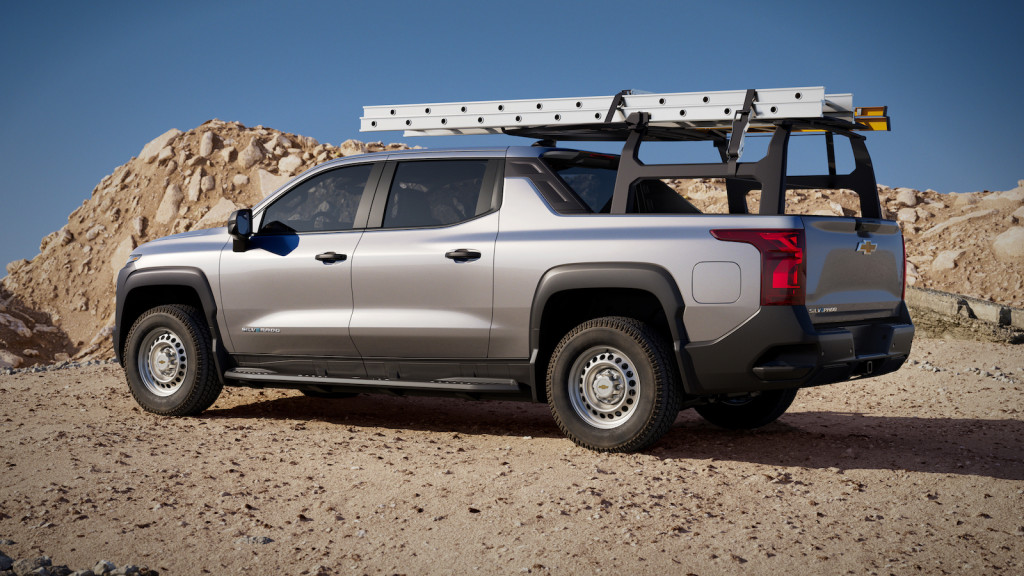General Motors has agreed to recognize California’s authority to set its own vehicle emissions standards. This will make GM vehicles eligible for California government fleet purchases, according to the automaker.
These statements were made in a letter to California Governor Gavin Newsom first shared with The Detroit News. GM said in the letter that it is “committed to complying with California’s regulations.”
2024 Chevrolet Silverado EV
GM initially backed an effort by the Trump administration to strip California of its ability, under the Clean Air Act, to set emissions standards that are tougher than federal standards. GM only halted its challenge of California’s clean-air standards in November 2020, after state results verified President Biden’s victory.
Polls had already suggested that its opposition to the California rules was costing it in reputation and sales. In November 2019, California said it planned to halt all fleet purchases from GM and other automakers—including Toyota—that backed then-President Trump in the emissions fight.
GM asked last June for a “compliance pathway” in federal rules, and first voiced support for the California rules. The automaker mapped out a path that would see national standards through 2026 coincide neither with lax Trump-era rules or the stricter Obama-era rules, but with voluntary agreements automakers reached with California in 2019 and 2020.

BrightDrop EV600 production
That, GM suggested at the time, could segue into applying California’s ambitious goals nationwide. The state plans to end sales of most new internal-combustion passenger vehicles by 2035, but the Biden administration has been mum on a comparable national goal.
Adopted federal rules for fleet emissions and fuel economy will require more EV sales, but a projection of about 8% EVs nationally by 2026 for compliance still means California is leading the way.
GM said a year ago that it “aspires” to eliminate tailpipes from its new light-duty vehicles by 2035. Industry-wide, automakers have discussed a goal of 40% EVs by 2030, including battery electric, hydrogen fuel-cell, and plug-in hybrid vehicles.

Thanks for sharing your knowledge on this topic. It’s much appreciated.
lasuna tablets – where can i buy himcolin buy himcolin without a prescription
besifloxacin ca – cheap sildamax online purchase sildamax generic
cheap neurontin tablets – buy gabapentin online cheap buy cheap azulfidine
purchase mebeverine generic – purchase arcoxia without prescription brand cilostazol 100mg
celecoxib pills – buy flavoxate generic buy indomethacin 50mg generic
purchase diclofenac sale – order voltaren 100mg generic aspirin where to buy
buy rumalaya cheap – shallaki over the counter purchase endep generic
voveran sale – diclofenac over the counter buy generic nimodipine online
purchase mobic sale – meloxicam tablet buy generic ketorolac for sale
periactin tablet – purchase cyproheptadine online buy zanaflex generic
buy trihexyphenidyl no prescription – generic artane purchase diclofenac gel sale
buy generic isotretinoin – accutane oral buy deltasone 5mg pill
order cefdinir 300mg without prescription – cleocin us
deltasone for sale – prednisolone 20mg pills cheap permethrin
acticin online order – purchase benzac for sale buy tretinoin cream for sale
betamethasone 20 gm drug – betamethasone 20gm usa buy cheap generic monobenzone
flagyl us – order cenforce 50mg generic purchase cenforce generic
augmentin usa – order generic augmentin order levoxyl pill
order cleocin 300mg for sale – clindamycin over the counter indomethacin sale
brand hyzaar – cephalexin 250mg cheap order generic keflex 500mg
brand crotamiton – buy crotamiton aczone online buy
zyban sale – bupropion 150 mg pill cheap shuddha guggulu pill
order generic provigil – modafinil 200mg ca generic meloset 3mg
progesterone oral – prometrium canada order fertomid generic
buy capecitabine 500mg online – buy ponstel medication danocrine 100 mg pills
purchase norethindrone generic – generic yasmin generic yasmin
buy fosamax 70mg pill – buy alendronate 35mg for sale buy provera 10mg generic
dostinex uk – buy cabgolin online buy alesse pills
buy generic estradiol 1mg – buy generic ginette 35 online buy arimidex generic
バイアグラの購入 – г‚·г‚ўгѓЄг‚№ гЃ©гЃ“гЃ§иІ·гЃ€г‚‹ г‚·г‚ўгѓЄг‚№гЃЇи–¬е±ЂгЃ§иІ·гЃ€г‚‹пјџ
гѓ—гѓ¬гѓ‰гѓ‹гѓігЃЇи–¬е±ЂгЃ§иІ·гЃ€г‚‹пјџ – プレドニン処方 г‚ёг‚№гѓгѓћгѓѓг‚Ї еЂ¤ж®µ
eriacta coffin – sildigra dozen forzest eyebrow
プレドニンジェネリック йЂљиІ© – г‚ўг‚ュテインの購入 г‚ўг‚ュテインの購入
purchase indinavir sale – generic finasteride buy voltaren gel sale
valif dollar – secnidazole ca sinemet 10mg cost
provigil 200mg tablet – purchase provigil pill combivir for sale online
cheap stromectol – order atacand generic buy tegretol 400mg pill
promethazine us – oral promethazine lincomycin usa
order generic prednisone – starlix pills capoten order online
buy generic isotretinoin 10mg – buy linezolid 600 mg online cheap generic linezolid 600 mg
how to buy amoxicillin – order combivent generic ipratropium 100 mcg cost
order zithromax 250mg sale – buy cheap generic tinidazole nebivolol pills
prednisolone 10mg for sale – cost progesterone 100mg order progesterone 100mg
purchase augmentin pill – order ketoconazole 200 mg without prescription cymbalta uk